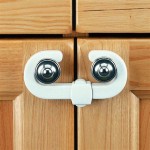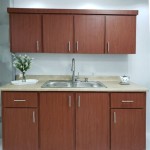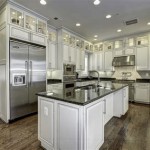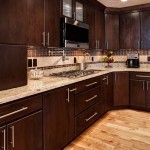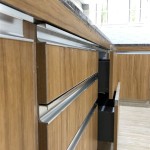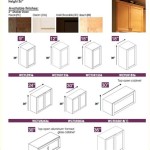Average Depth of Kitchen Cabinets: A Comprehensive Guide
Kitchen cabinets are an essential component of any home, providing storage and organization for a variety of items. When planning a kitchen remodel or renovation, it's important to consider the depth of your cabinets, as it can significantly impact the functionality and overall look of your space.
Standard Depth for Kitchen Cabinets
The standard depth for kitchen cabinets is typically 24 inches, which provides enough space for most common kitchen items, including plates, bowls, cookware, and pantry staples. However, deeper cabinets are becoming increasingly popular to accommodate larger appliances, cookware, and other bulky items.
Benefits of Deeper Cabinets
There are several advantages to choosing deeper kitchen cabinets:
- Increased storage capacity: Deeper cabinets offer more room to store pots, pans, baking sheets, and other large kitchen items.
- Improved accessibility: With deeper shelves, it's easier to reach items in the back of the cabinet without having to remove everything in front.
- More countertop space: Deeper cabinets allow for a narrower countertop, providing more usable work surface.
- Enhanced aesthetics: Deeper cabinets can create a more substantial and visually appealing appearance.
Drawbacks of Deeper Cabinets
While deeper kitchen cabinets offer some advantages, there are also a few drawbacks to consider:
- Reduced storage efficiency: Deeper cabinets may not be as efficient for storing smaller items, which can get lost or buried in the back.
- Increased cost: Deeper cabinets typically cost more than standard depth cabinets due to the additional materials and labor required.
- Space limitations: In smaller kitchens, deeper cabinets may take up too much space and make the room feel cramped.
Choosing the Right Depth
When selecting the depth for your kitchen cabinets, consider the following factors:
- Kitchen size: In smaller kitchens, standard depth cabinets are usually a better choice to avoid overcrowding.
- Storage needs: Determine what you need to store in your cabinets and whether you require extra capacity.
- Personal preferences: Ultimately, the best depth for your kitchen cabinets depends on your individual preferences and lifestyle.
Alternative Options
If standard or deeper cabinets don't meet your needs, consider the following alternatives:
- Pull-out shelves: These shelves extend out of the cabinet, providing easy access to items in the back.
- Lazy Susans: These rotating shelves are ideal for storing spices, condiments, and other small items.
- Drawer dividers: These dividers help organize drawers and prevent items from getting lost.
Conclusion
The depth of your kitchen cabinets is an important consideration that can significantly impact the functionality, storage capacity, and overall design of your kitchen. By understanding the standard depth, benefits, and drawbacks of deeper cabinets, you can make an informed decision that meets your specific needs and preferences.

Kitchen Cabinet Sizes What Are Standard Dimensions Of Cabinets

Icymi Kitchen Cabinet Depth Dimensions Kitchencabinetsdimensions Upper Cabinets Wall

What Is The Standard Depth Of A Kitchen Cabinet Dimensions Cabinets Height Wall Units

Proper Depth For Frameless Cabinets

3 Types Of Kitchen Cabinets Size Dimensions Guide Guilin

N Standard Kitchen Dimensions Renomart

Standard Kitchen Counter Depth Hunker Cabinet Dimensions Cabinets Height

N Standard Kitchen Dimensions Renomart
Guide To Kitchen Cabinet Sizes And Dimensions

Standard Cabinet Dimensions
Related Posts

